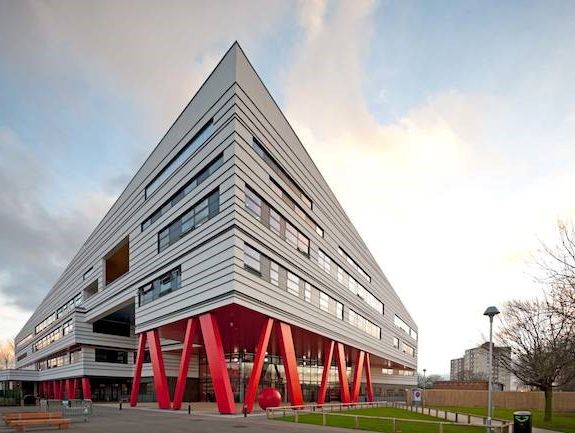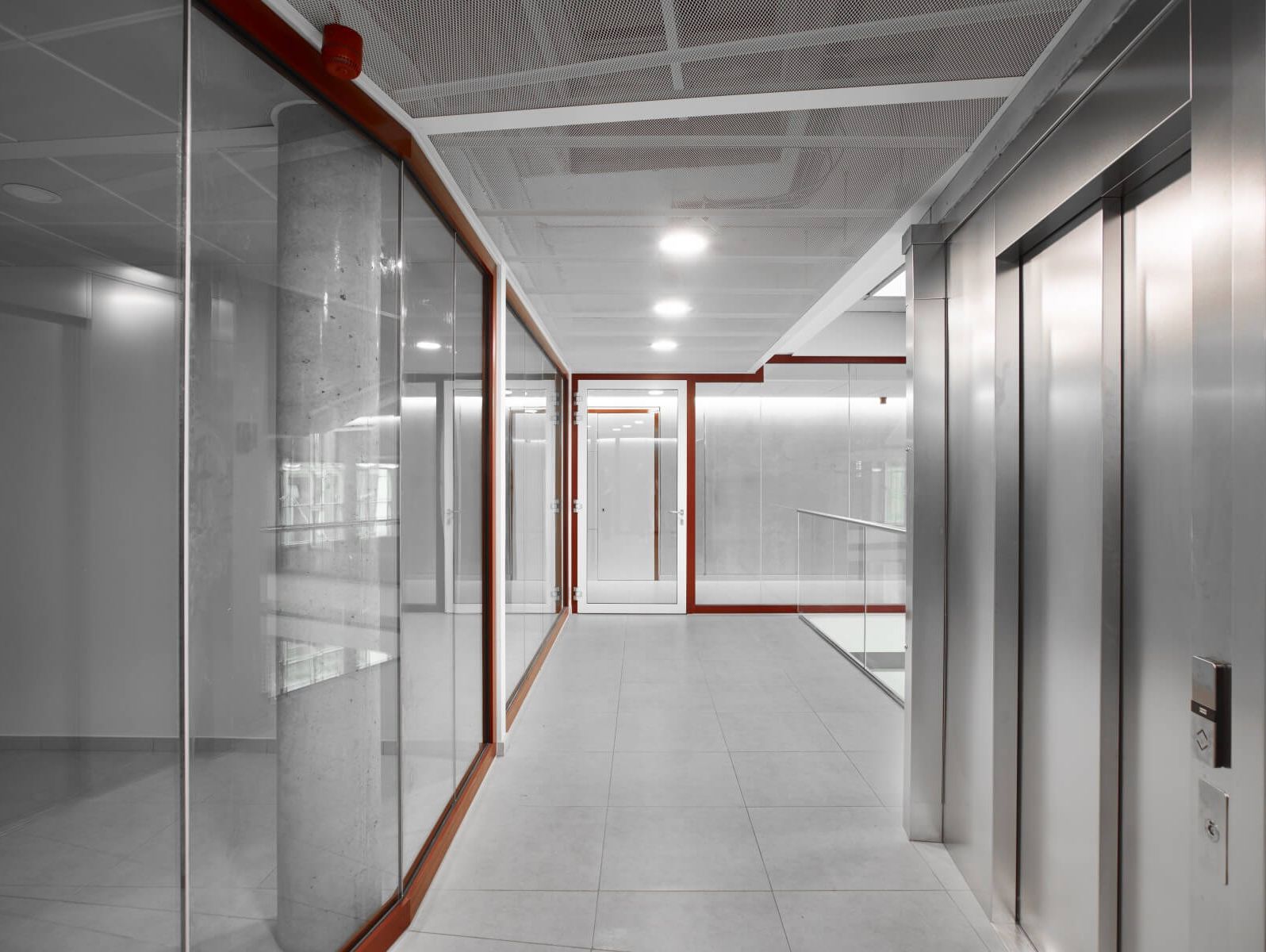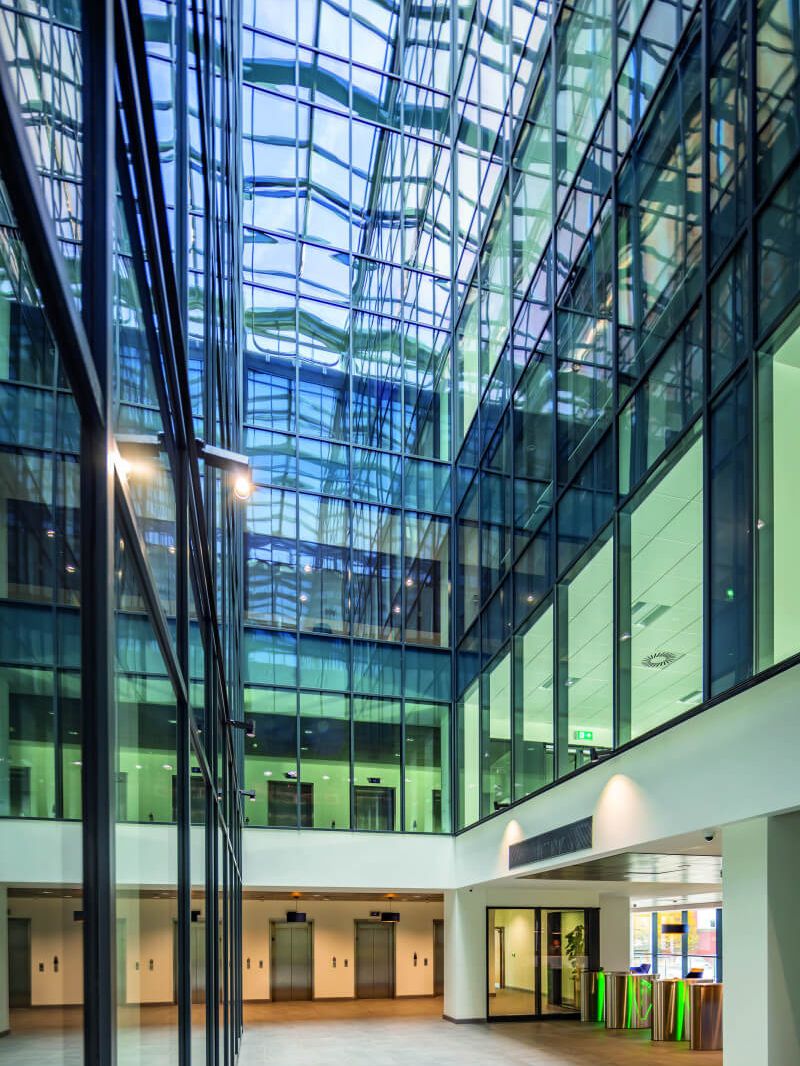The greatest fire protection challenges in modern facilities
How do you provide fire safety in buildings intended to be green? What solutions, according to the applicable fire protection standards, take care of safety and the environment in an efficient manner?

ICE KRAKÓW CONGRESS CENTRE, Kraków, Poland. Systems used: MB-78EI, MB-60, MB-60E, MB-70, MB-SE95, MB-SR50 IW
In 2022, in the EU, land with a surface area similar to the whole of Corsica was scorched
2022 was the second worst year in the EU in terms of the surface area of land burned due to forest fires. The fires involved nearly 900,000 hectares of land, which is more or less equal to the whole of Corsica.
Partially available fire data for 2023 show that the fully burned surface area throughout the current year is smaller than in 2022, yet is still alarmingly high.
Fire hazard is increasing not only as a result of climate warming and the increasing risk of forest fires in the Alps but also due to denser development in urban centres.
Investments in passive fire protection measures should be a priority for every investor; this is particularly challenging in facilities erected in a sustainable way. They require you to combine fire protection with a reduction in the building’s carbon footprint. Fire partitions, roofs, and smoke control systems have to meet fire protection standards and support green buildings.
‘Fortunately, there are solutions on the market that facilitate enhancing fire safety in modern facilities. Aluprof’s MB-78EI fire partitions are the best example of such products’, explains Rafael Altheim from Aluprof, an international manufacturer of aluminium systems in Europe.

Andrew Marvell College, Kingston Upon Hull, United Kingdom. Systems used: MB-78EI
Fire partitions for modern facilities
One of the products in the brand portfolio that fits perfectly into the sustainable building concept is the MB-78EI system of partitions with a fire resistance rating of F15 (EI 15) to F90 (EI 90). Thermally insulated aluminium profiles that make up the entire partition design ensure fire protection, an extremely high thermal conductivity coefficient, and the possibility of making smokeproof designs (with such products as the MB-78EI DPA automatic fire protection sliding door).
A unique feature of the MB-78EI system, which is ideal for modern buildings, is the possibility of bending profiles and creating different arched designs, which is why it can be used even in the most non-standard facilities. They also excel in the restoration of historical objects when it is necessary to maintain the building’s style and character.

Don Bosco, Brussels, Belgium. Systems used: MB-78EI.
Smoke control windows and ventilators in sustainable buildings
The biggest concern during a fire is not fire itself but smoke – it is dangerous for everyone in the facility. Smoke control windows and ventilators can actively reduce the hazardous effects of fires.
Aluminium smoke control windows and ventilators fulfil their function and, most importantly, are consistent with the concept of sustainable buildings. Aluminium is 100% recyclable – explains Altheim.
Glazed fire protection roofs for green buildings
One of the challenges of sustainable buildings is to provide a building with as much natural light as possible, which reduces the consumption of electricity to illuminate the building’s interior. Glazed roofs based on an aluminium MB-SR50N EI façade are a great solution. ‘Aluprof provides designs that make it possible to build glazed fire protection roofs with a pitch of 0° to 80°’, elaborates the Aluprof’s expert.

Capital Quarter Cardiff, Cardiff, Great Britain. Systems used: MB-SR50N EI.
Let’s Build a Better Future
State-of-the-art fire protection solutions that comply with the applicable European standards fit perfectly into the sustainable building concept and respond to the challenges of the changing climate to an even greater extent. You should use such solutions for the safety of building users, the entire local community, and the environment.
